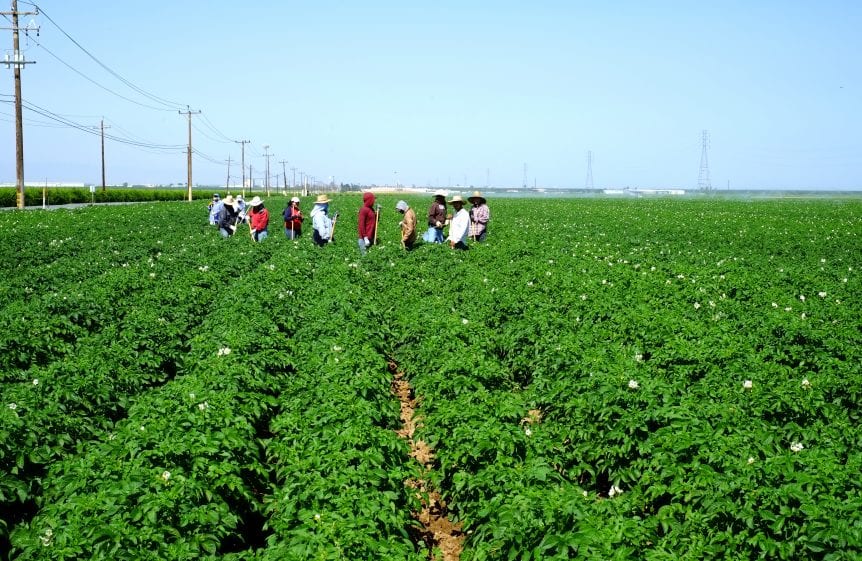
Credit: Richard Thornton / Shutterstock.com
When ag labor costs rise, specialty crop growers are usually among those hit hardest. Now, a new USDA report goes in-depth on how fruit and vegetable growers are handling the higher costs of labor. The report says farm labor costs increased from 2010-19 for several reasons, including fewer newly-arrived unauthorized workers, rising State minimum wages, and new requirements to pay overtime wages to some farm workers. Fruit and vegetable crops are more labor-intensive and time-sensitive than many other crops, and delicate fruits like strawberries for example require more handling.
So, how are farmers dealing with this? According to the report, rising labor costs often cause producers to adjust their production and management practices to compensate for the changing cost structure. Short-term options to meet the labor needs on farms include management changes, such as picking fields and orchards less often and introducing mechanical aids that increase worker productivity. Longer-term options include the use of more labor-saving mechanization, additional H-2A guest workers, and reducing overall domestic production.
Listen to Sabrina Halvorson’s program here.

Sabrina Halvorson
National Correspondent / AgNet Media, Inc.
Sabrina Halvorson is an award-winning journalist, broadcaster, and public speaker who specializes in agriculture. She primarily reports on legislative issues and hosts The AgNet News Hour. She was recently named the 2024 Farm Broadcaster of the Year by the National Association of Farm Broadcasting and serves as a Council Member on the World Agriculture Forum. Sabrina is a native of California’s agriculture-rich Central Valley and now divides her time between California and North Dakota.










